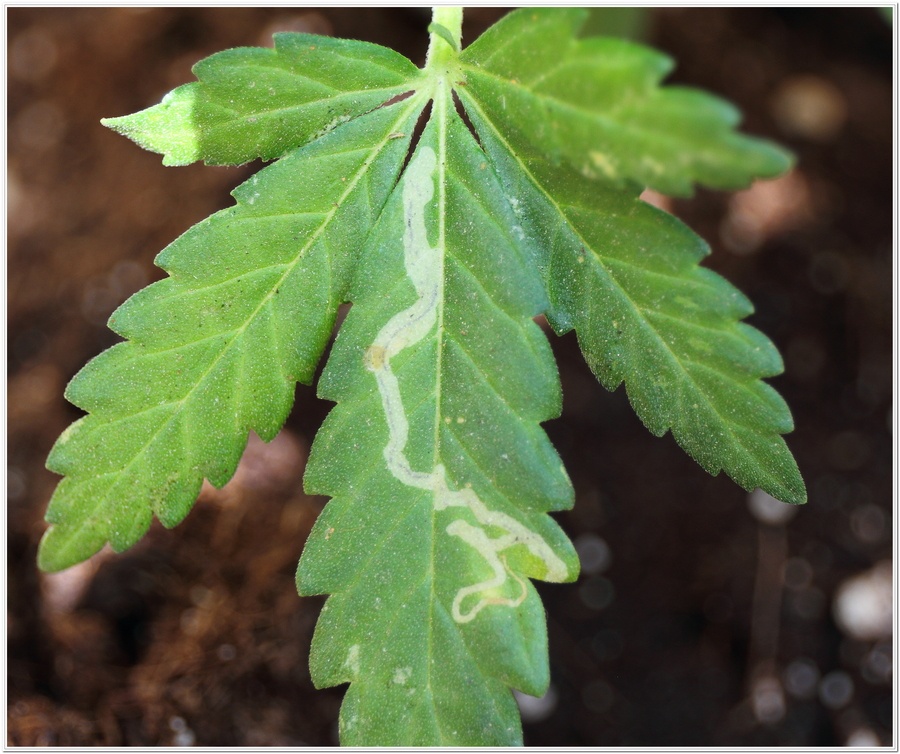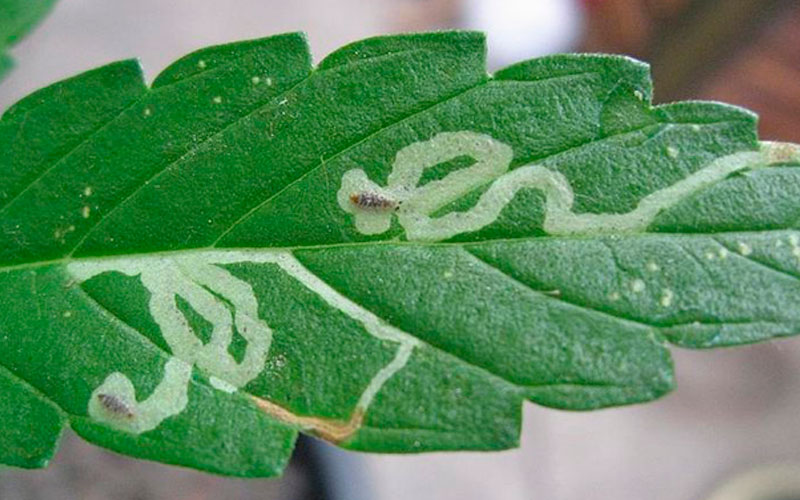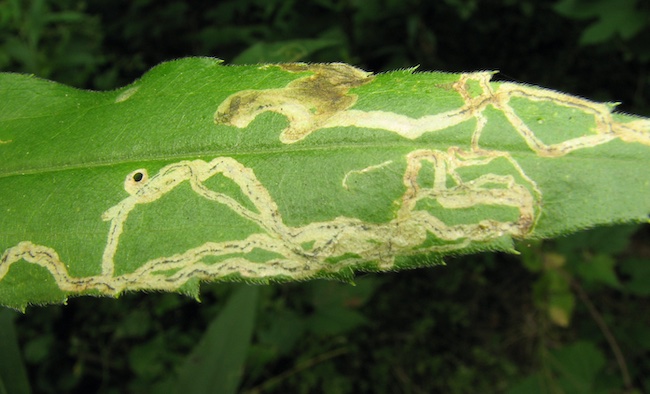
Minelayer
Phyllocnistis Citrella
Pathogen:
Insect
Type:
Risk:
INTERMEDIATE




DESCRIPTION
Pathogen description
The leaf miner is a common pest on cannabis plants, caused by the larvae of various insects, such as flies, that feed on the internal tissues of the leaves. These larvae, when feeding, create galleries or tunnels inside the leaves, which can weaken the plant and make it more susceptible to other diseases and pests.
Disease description
Symptoms of leafminer attack on cannabis include the presence of small galleries or tunnels visible on the inside of the leaves, which resemble sinuous or serpentine lines. Additionally, discolored, dry or necrotic areas may be observed around the galleries, as well as a decrease in overall plant health and vigor.

TEMPERATURE AND HUMIDITY
20°C - 28°C
50% - 70%

VOIES DE TRANSMISSION
Active flight, transport of plant material, previous infestation in the soil.

Chemical treatments
CONTROL
• AZADIRACTIN 1% (AS AZADIRACTIN A) [EC] P/V
• Azadirachtin 2.6% (AS AZADIRACTIN A) [EC] P/V
• DELTAMETHRIN 2.5% [EC] P/V
• DELTAMETHRIN 2.5% [EW] P/V
• LAMBDA CYHALOTHRIN 1.5% [CS] P/V
• LAMBDA CYHALOTHRIN 10% [CS] P/V
• LAMBDA CYHALOTHRIN 2.5% [WG] P/P
Treatments authorized in organic farming
• AZADIRACTIN 1% (AS AZADIRACTIN A) [EC] P/V
• Azadirachtin 2.6% (AS AZADIRACTIN A) [EC] P/V
• LAMBDA CYHALOTHRIN 1.5% [CS] P/V
• LAMBDA CYHALOTHRIN 10% [CS] P/V
• LAMBDA CYHALOTHRIN 2.5% [WG] P/P
Biological control
• BACILLUS THURINGIENSIS KURSTAKI (Strain SA-11) 85% (32 MILLION IU/G) [WG] P/P
Preventive treatments
-
To prevent and control the leafminer in cannabis crops, it is important to implement integrated pest management measures. This includes regularly inspecting plants for early signs of infestation, manually removing larvae and affected leaves, using sticky traps to monitor and capture adults, encouraging plant diversity to attract natural enemies of the leafminer. , and the selective application of insecticides when necessary.
Recommendations
*The recommended treatments are recommendations based on the authorities' databases and do not replace in any way the guidelines established by the legislation of each country.





